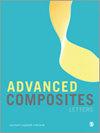Z-scheme Mn-CdS/MoS2/TiO2三元光催化剂的合成
IF 2.1
4区 材料科学
Q3 MATERIALS SCIENCE, COMPOSITES
引用次数: 22
摘要
高效可见光驱动的染料降解光催化剂的探索在废水处理中受到了极大的关注。在此,通过简单的水热法结合连续的离子层吸附和反应,将二硫化钼(MoS2)和硫化镉-锰(CdS-Mn)依次组装到二氧化钛(TiO2)纳米管上。引入硫化锌(ZnS)层作为性能改进的势垒;所得材料在降解甲基橙(MO)和9-蒽羧酸方面表现出显著的可见光诱导光催化活性,分别是TiO2、MoS2/TiO2和CdS Mn/TiO2体系的3.16倍、2.00倍和1.69倍或2.86倍、1.56倍和1.47倍。此外,所合成的ZnS/CdS-Mn/MoS2/TiO2复合材料在可见光照射下的出水制氢率也高达408.27mmol/cm2/h,约为纯TiO2的30.08倍,分别是MoS2/TiO2和CdS Mn/TiO2的5.18倍和2.52倍。光催化剂性能的提高主要归因于CdS Mn、MoS2和TiO2的协同作用,在CdS Mn/MoS2/TiO2电极中形成Z方案体系,不仅加快了界面电荷转移效率,而且保持了光生电子和空穴的强氧化还原能力。此外,所制备的光电极在析氢反应和有机降解过程中高度稳定且完全可回收。本文章由计算机程序翻译,如有差异,请以英文原文为准。
Synthesis of Z-scheme Mn-CdS/MoS2/TiO2 ternary photocatalysts for high-efficiency sunlight-driven photocatalysis
The exploration of highly efficient visible-light-driven photocatalysts for dye degradation has received great concerns in wastewater treatment. Here, molybdenum disulfide (MoS2) and cadmium sulfide–manganese (CdS-Mn) were sequentially assembled onto titanium dioxide (TiO2) nanotube by a simple hydrothermal method coupled with successive ionic layer adsorption and reaction. A zinc sulfide (ZnS) layer was introduced as a potential barrier for performance improvement; the resultant material exhibits prominent visible-light-induced photocatalytic activity in degrading methyl orange (MO) and 9-anthracenecarboxylic acids, which is 3.16-fold, 2.00-fold, and 1.69-fold or 2.86-fold, 1.56-fold, and 1.47-fold of TiO2, MoS2/TiO2, and CdS-Mn/TiO2 systems, respectively. Furthermore, the synthesized ZnS/CdS-Mn/MoS2/TiO2 composite also possesses a high hydrogen production rate of 408.27 mmol/cm2/h out of water under visible light illumination, which is about 30.08 times greater than that of pure TiO2 and 5.18-fold and 2.52-fold of MoS2/TiO2 and CdS-Mn/TiO2, respectively. The enhanced photocatalyst performances are mainly attributed to the synergetic effects of CdS-Mn, MoS2, and TiO2, forming a Z-scheme system in the CdS-Mn/MoS2/TiO2 electrode, which not only accelerates the interfacial charge transfer efficiency but also preserves the strong redox ability of the photogenerated electrons and holes. In addition, the prepared photoelectrode is highly stable and completely recyclable over hydrogen evolution reaction and organic degradation.
求助全文
通过发布文献求助,成功后即可免费获取论文全文。
去求助
来源期刊

Advanced Composites Letters
工程技术-材料科学:复合
自引率
0.00%
发文量
0
审稿时长
4.2 months
期刊介绍:
Advanced Composites Letters is a peer reviewed, open access journal publishing research which focuses on the field of science and engineering of advanced composite materials or structures.
 求助内容:
求助内容: 应助结果提醒方式:
应助结果提醒方式:


